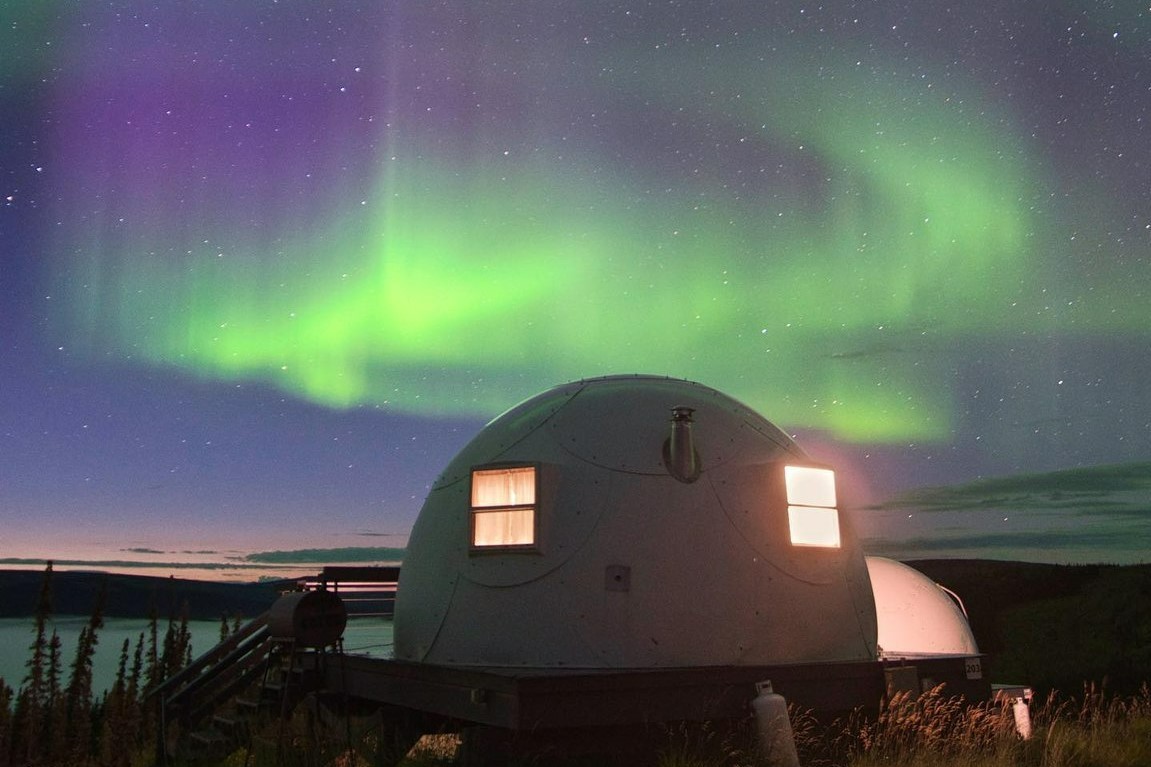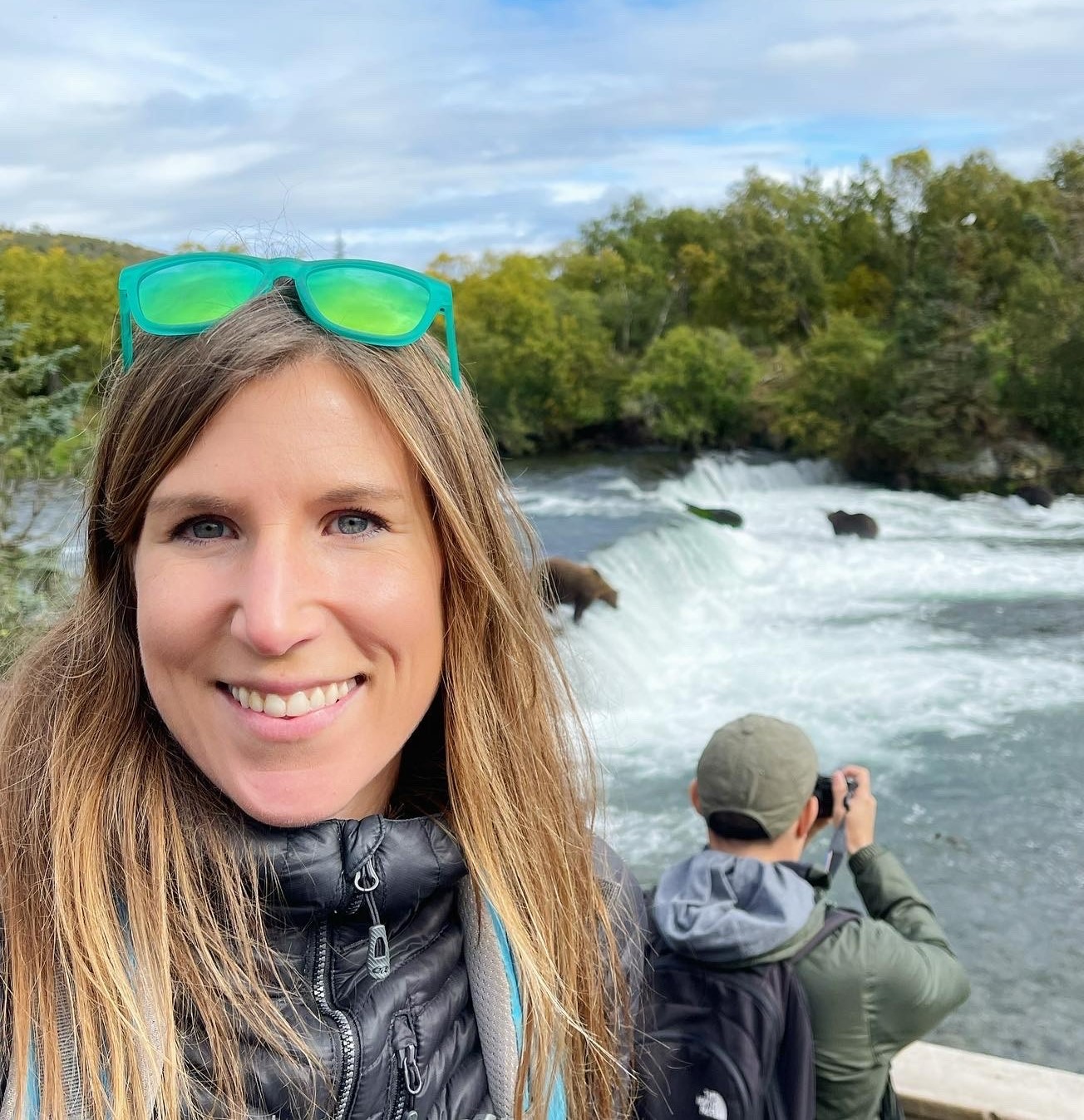How to Plan the Ultimate Alaska Winter Vacation
There’s something so magical about winter in Alaska – a thick blanket of snow covering the landscape that glitters in the low sunlight, ethereal northern lights dancing overhead, the peaceful silence of snowfall, and the comforting respite of relaxing in front of a warm fire or enjoying a hot drink after a day of outdoor adventures. If you haven’t thought about visiting Alaska in the winter, consider this your invitation. Read on to learn about how to plan the ultimate winter vacation in Alaska.
Winter Activities
While the days are shorter than the endless daylight of summer’s Midnight Sun, there’s no shortage of things to do in Alaska in winter – and you’ll get to experience tours and activities that aren’t available to summer visitors. Outdoor recreationalists will rejoice at the endless options for winter recreation opportunities to get the heart pumping: downhill and cross-country skiing, snowshoeing, fat tire biking, and ice skating are enjoyed by visitors and locals alike during Alaska’s winter days. Outfitters throughout the state are available to rent the gear that you’ll need to get out on the trails and they’re more than happy to share recommendations on where to go.
Guided tours are another great way to experience some of Alaska’s cherished winter sports and activities. Climb aboard a dog sled to experience the power of the state’s impressive canine athletes, join a snowmobile tour (called snowmachines by locals) to explore wintery backcountry landscapes, or join a guided ice fishing trip complete with warming huts to keep you cozy. For a unique and relaxing hot and cold experience, consider a jump in the pool – the steamy thermal pools of Chena Hot Springs outside of Fairbanks, that is, or the network of hot and warm pools nestled among the trees at the Alyeska Nordic Spa in Girdwood.

Northern Lights Viewing
Visitors from all over the world travel to Alaska to see the spectacular northern lights, also called the aurora borealis. Alaska is one of the best places on earth to witness this otherworldly display of dancing bands of light in green, yellow, red, and purple in the night sky. The northern lights can be seen from August to April, and while they are visible throughout the state, your best chances of seeing them are in Interior and Arctic locations under the Auroral Oval, from communities like Fairbanks, Coldfoot, and Wiseman.
The DIY crowd can certainly find the lights on their own by keeping an eye on aurora forecasts like the statewide aurora forecast and the Fairbanks aurora tracker. However, for the best chances of seeing the northern lights, join a northern lights viewing tour. Guided tours, primarily offered in the Interior, Southcentral, and Arctic regions, will get you away from ambient city light to some of the top northern lights viewing spots, with some tours specifically focused on northern lights photography. Better yet, stay a couple of nights at unique accommodations that have been specially built for northern lights viewing, like lodges, cabins, and even igloos, for a relaxing way to maximize your aurora viewing. These accommodations can be found away from light pollution and include perks like aurora wake-up calls, floor-to-ceiling windows, heated viewing areas, and outside viewing decks. And remember – if you hear locals say that “the lights are out” – that’s a good thing.

Winter Festivals
Some of Alaska’s top festivals and events can be found in the winter months. Plan your trip around one of these events for a look inside Alaska’s fascinating culture, arts, and history. To view world-class ice sculptures, plan a trip to Fairbanks in mid-February or March to check out the World Ice Art Championships. This event is one of the largest ice art competitions in the world and attracts talented international ice carvers, featuring stunning ice sculptures lit up with colorful lights and an interactive ice playground. Also in Fairbanks in March is the Festival of Native Arts, a celebration of Alaska Native culture through traditional dance performances, music, and arts.
Anchorage’s flagship winter event is Fur Rendezvous, nicknamed "Fur Rondy." This 12-day February festival celebrates the pioneering spirit of Alaskans and has been running since 1935. Fur Rondy features a wide selection of fun and wacky events including the Rondy Carnival, snow sculptures, the World Championship Sled Dog Race, a zany outhouse race, Running of the Reindeer, and much more.
Immediately after Fur Rondy is the start of the famous Iditarod Trail Sled Dog Race, where mushers and dog teams race nearly 1,000 miles from Willow to Nome. You can catch the ceremonial start of the race in Anchorage the first weekend in March, where thousands of spectators cheer on the teams of canine athletes and mushers from downtown Anchorage and various locations along the route in town. To catch sight of the official start of the race, head north to the town of Willow the next day, and you can cheer on the mushers at the finish line in Nome about a week later.

Planning Tips
- Winter solstice on December 21 is the shortest day of the year. Fairbanks gets about 3 hours and 45 minutes of daylight, Anchorage gets about 4 ½ hours, and Juneau gets about 6 ½ hours. Some communities in the Arctic region don’t get daylight for over two months in winter. Long, dark nights are ideal for northern lights viewing, and we start gaining daylight every day after winter solstice. If you’re wanting to maximize winter daylight hours, consider planning your trip from February – April.
- Pack lots of warm layers, including hats, gloves, insulated boots, snow pants, and a warm jacket. Some winter tours, like snowmobile tours, will provide you with additional cold weather gear to keep you warm out on the trail.
- If northern lights viewing is your top priority, give yourself a window of several days to search for the lights or join a tour. Aurora activity and weather conditions fluctuate so be sure to give yourself extra time to maximize your viewing chances.
- You’ll find less crowds, lower prices, and more availability for accommodations and activities in winter. However, it’s a good idea to book early to ensure your spot – especially if you are traveling around the holidays or a winter festival.

Alaska: AKA Your Next Adventure
Where will your Alaska adventure take you? Order our Official State of Alaska Vacation Planner and plot your course.


